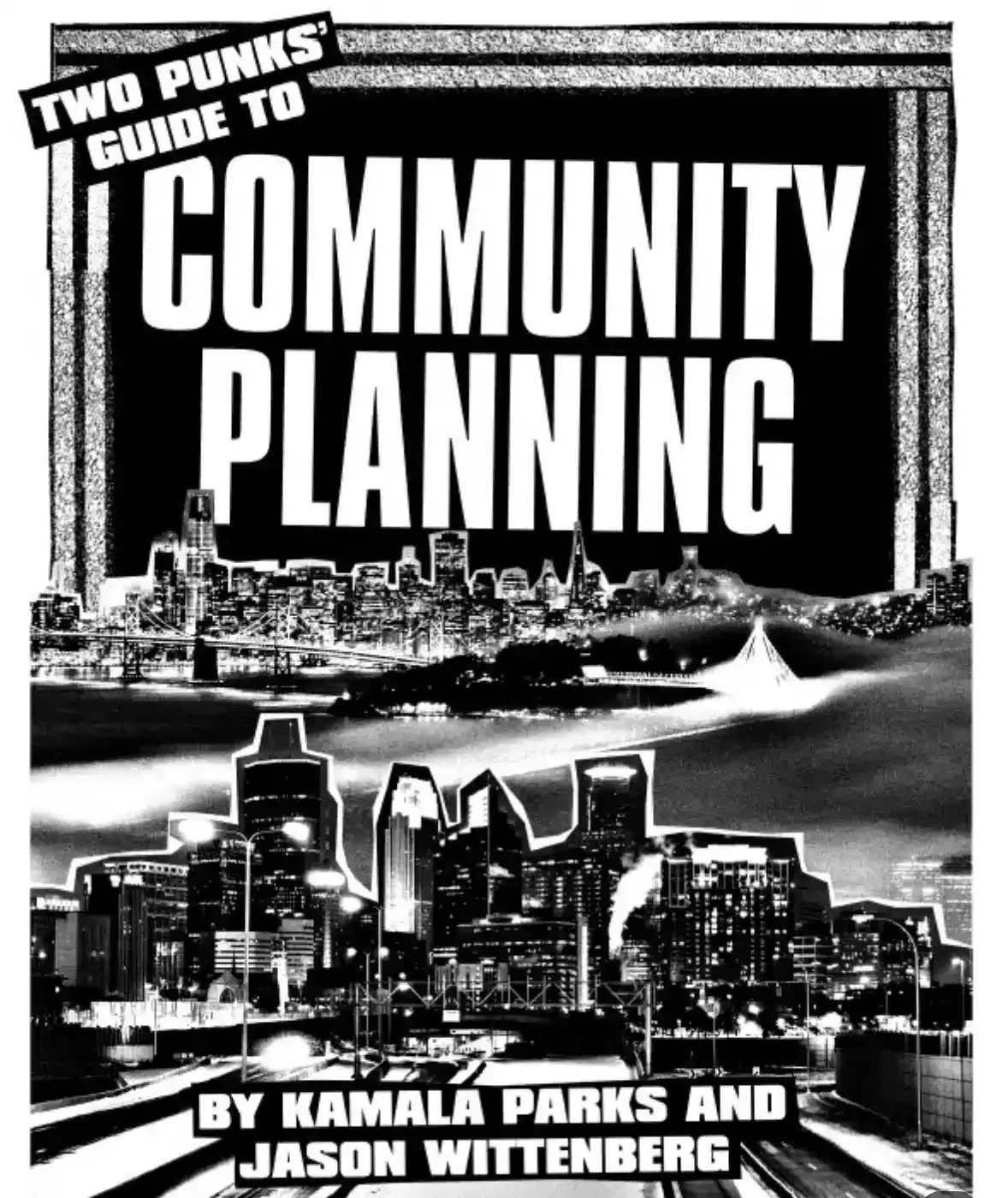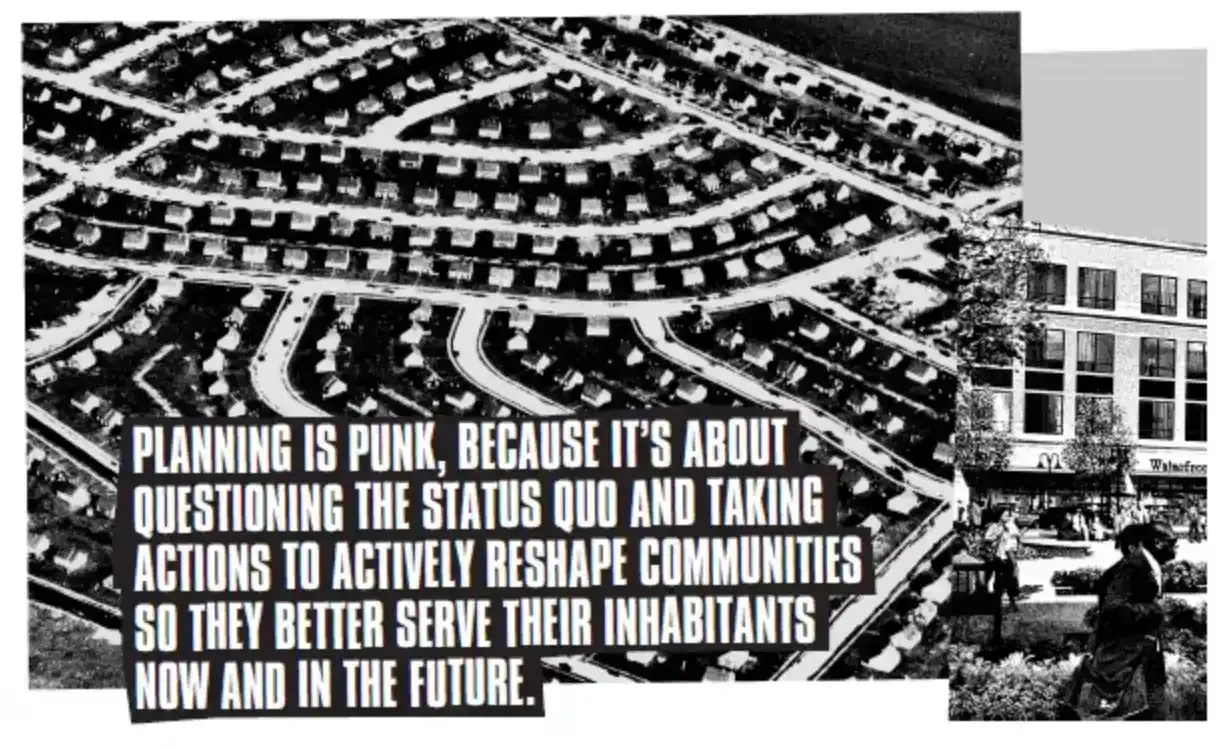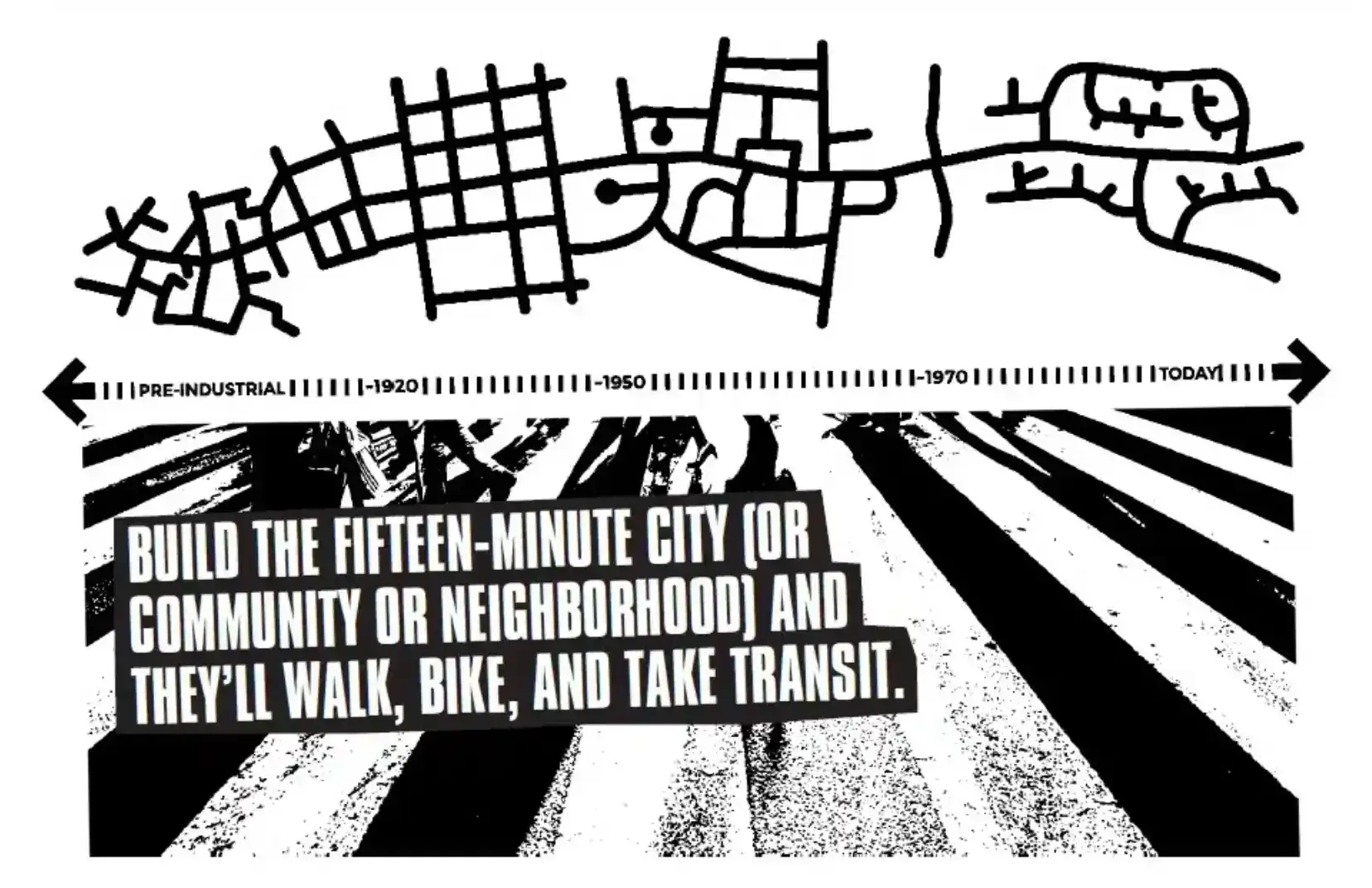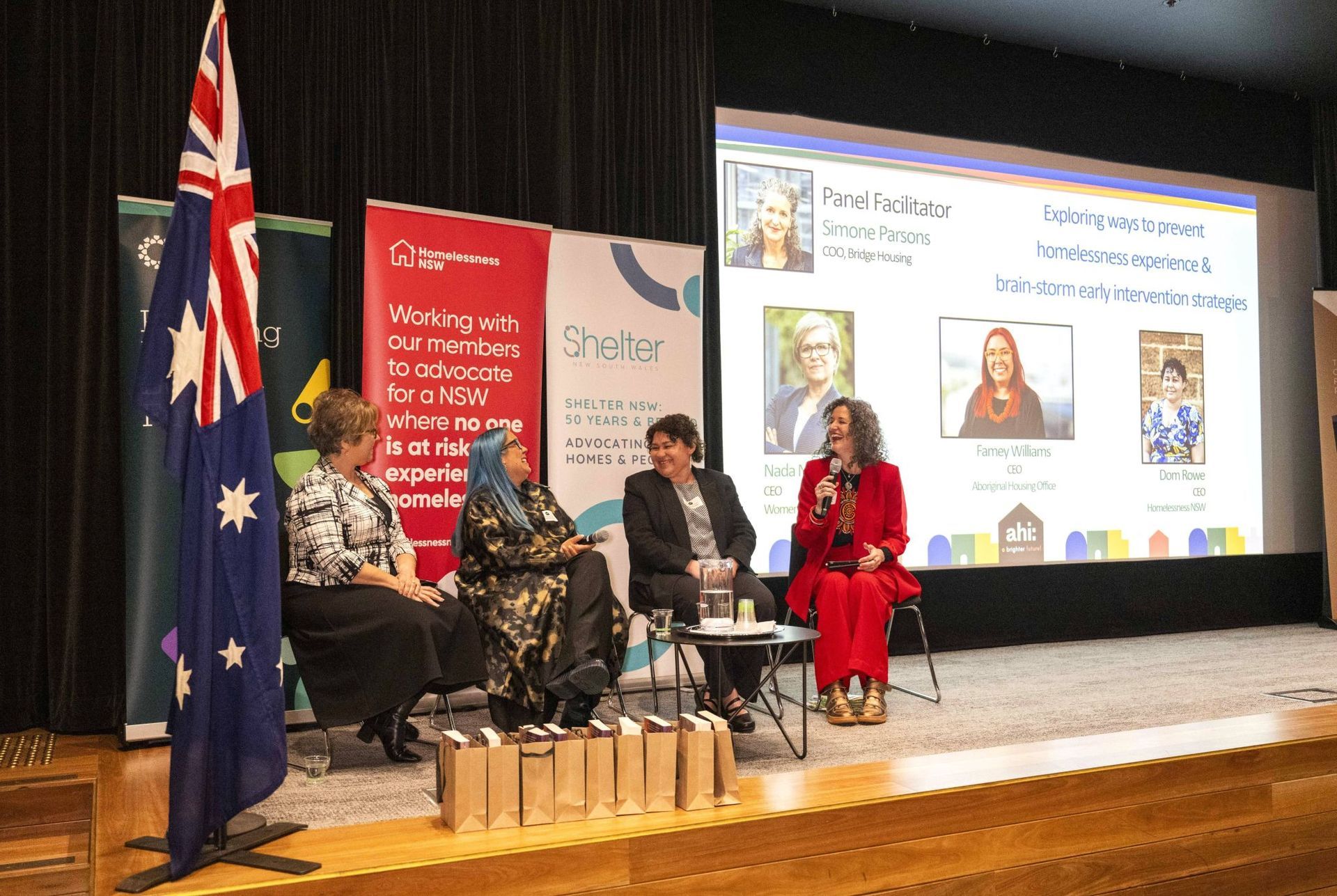"I felt very compelled to educate this group of folks, my community, about the importance of development and housing in relation to transportation."
How do you explain punk to a layperson?
Kamala: "I don’t."
Jason: "That is a tough one. It includes so many different factions. As much as the sort of nihilist side of punk has been interesting and fun, I’m more interested in the “there’s a better way” and “a better world is possible” side of punk – that’s been more appealing."
What kind of feedback have you had about the piece?
Jason: "I had a lot of positive feedback. It clearly caused people to think about issues in ways they hadn’t really thought about before. It was interesting that some of the people who read and gave feedback are people who work in the [city planning] profession and are unfamiliar with punk and, on the other side, there were punks without much exposure to city planning and development. Both camps are enjoying it and getting useful info.
Kamala: "I had a range – a few laypeople like my sister and her friends, my husband. Generally, besides my husband who said it made his brain hurt, others said it made them really think about things."
"My punk planner friends read it and didn’t know I was doing it, and so they thought it was well written and are passing it around. We’re both very academic because of our work, but Jason just wanted to be sure that folks knew about it – especially since Minnesota [where Jason currently works] is an important hub of punk, and stuff going on there is so progressive and inspiring. Translating and explaining things in more layperson terms was challenging, and I hope that we conveyed our message in a compelling way."
Jason: "We got questions, but no one who was trying to push back. I haven’t had anyone want to argue points, but that would be fun too. We can largely thank Kamala for being anti-jargon. I started writing like [I was submitting a paper to the] American Planning Association. She said, 'That’s not our audience', and she was correct. It would have been less compelling if geared towards the audience I usually write for."
Why publish it in a punk magazine?
Kamala: "Punks are generally quite progressive. In the past, being anti-developer and anti-this and anti-that was actually pushing back against blind progress. Progress can be good and bad – I’m using it neutrally here. For us, we’re punks, and this is something I hear repeatedly, so I thought it was important to reach out to this community."
"Now, it’s very conservative to be anti-housing development and 'Can’t we return to where we are? Why do things have to change?' I have a different mindset now. I can’t claim I was always pro-housing developer, and I don’t think they’re all great – rules need to be clearly laid out. You’re trying to set up rules so any developer, regardless of moral compass, will do the right thing for community."
Let’s talk about the intersections between punk and community planning!
Jason: "A better world is possible. Kamala and I, we’re in a position where we have some influence over the future of our cities. It’s a messy process often that involves a lot of competing interests, and as Kamala pointed out there hasn’t been a really good sense among our colleagues in punk community about what all goes into that mess of how cities change. So, I really liked the opportunity to bring this topic into
Razorcake, the largest indie punk zine, which seemed like a really great forum to get that out there."
Kamala: "I echo what Jason said. There’s a somewhat natural extension between punk and community planning – we deliberately called it community planning because we didn’t want to be too wonky, though it’s really about transportation and land use planning – put that on a cover and see eyes glaze over. Community planning is a useful catchall even if it has some specificity. There’s the idea about do it yourself (DIY) and being a part of change you want to see. That’s not unique to punk but it is one of punk’s tenets.
In your piece, you note that some very effective planners have no college degrees and might have arrived at their jobs through advocacy (e.g., bicycle or housing), but that most typically have master’s degrees – like both of you. Can you talk about how you got to where you are now? What are some of the paths for those who don’t have higher ed degrees, or are unwilling/unable to get them?
Kamala: "For me, it was a long, winding road. I had no idea the planning profession existed until my 30s. I thought I wanted to be an architect. When you’re interested in urban design, you think of architects because they transform the environment. You don’t necessarily think about the underlying policies or soft infrastructure that you don’t see as a layperson."
"I got my bachelor’s degree in math and went into teaching. Two years of teaching high school chewed me up and spit me out – it was really hard. So, I was at loose ends. While I was getting my teaching credential, I saw urban studies in a catalogue at San Francisco State University. At the time, there weren’t a lot of undergraduate or community college courses that would allow you to enter this field. What I’d love to do is teach a community college class about transportation and land use planning. That would be really helpful."
"We rely on a lot of data, so sometimes folks get into this field because they’ve done data collection – e.g. traffic counts. Or they have some mechanical knowledge – e.g. doing things like traffic signal timing, which makes use of both mechanical and field experience — then get exposed to the field."
"Advocacy is one of the most common ways – pedestrian and bike advocacy, housing advocacy. Generally, a lot of places want to see advanced degrees."
Jason: "My path was a little different but overlapping. I was partway through undergraduate study when I discovered that city planning was a thing. I majored in geography with an urban geography emphasis. I had a great mentor who was a part of the city planning division and urban studies, landed an internship with the city working on basic planning issues. It’s helpful to be around a planning office and see how things work, what conversations are like, what people work on from day to day. From there, I got a master’s degree in urban planning and policy at the University of Illinois Chicago and was fortunate enough to land back in Minnesota right after graduate school."
"As Kamala notes, generally our department looks for people with advanced degrees in planning or closely related fields, but people can break into the profession through advocacy, architecture, public policy and health, sustainability, and engineering – these are often gateways."
How do we make it easier for people to get into this line of work?
Kamala: "They have to know about it first. That’s the basic thing."
"There are a couple of things working against planning as a profession. First, it’s hidden and obtuse and even people close to me don’t understand what I do because it doesn’t feel tangible. They can’t grab on to it. It’s wonky. I think that we as planners try but don’t necessarily do a good job of conveying to the general public – or even to people close to us – what we do in a way that sticks in the head. I remember when I was trying to find a simple graphic about different stages of a project that starts with a plan, and I went on the APA website and could not find one layperson-friendly way of describing the process. I was really shocked. I think we need to spend more time as planners coming up with our elevator speech about what we do – we need to get out and talk with folks more. I was invited by Berkeley High School to talk at their senior lunch-and-learn: how’d you get that cool job? I talked with the senior class there, but it’s hard to prioritize when you have so many other things going on."
"I think we need to spend more time as planners coming up with our elevator speech about what we do – we need to get out and talk with folks more."
Jason: "There’s a kids’ book about city planning: Ava Tanner the City Planner. It’s long been a goal of ours to have more involvement with the Minneapolis public schools and high schools. We haven’t made it work but will keep trying."
"Raising the awareness of young people in cities would be helpful – it would bring diversity to a field that could use more diversity. I think cities could do a bit more to create positions at the technician/intern level that don’t require college degrees, to give people a chance to shine and work their way up in the organization. I don’t know how many places have been successful with that."
Kamala: "BART employees are provided access to subsidized educational opportunities, such as course offerings at San Jose State University’s Mineta Transportation Institute. That’s a potential way for an organization to bring more awareness."
"It’s a well-respected transportation think-tank program – quite progressive. They developed the concept of the level of traffic stress versus vehicle level of service, they came up with transit pedestrian and bicycle levels of traffic stress, pioneered the idea of different types of cyclists – terms that entered the lexicon."
There’s a big need for more people working in affordable housing, especially as the more experienced leaders retire – is the same true for community planning? How are community planners overall doing as far as succession planning and bringing up the next generation?
Jason: "Interest seems to ebb and flow – I don’t have a good sense of what’s been happening with grad school applications for planning and how they compare historically. When we post a job, sometimes there’s tremendous interest and a large applicant pool; other times, it’s a challenge."
"I have an encouraging anecdote, though. We hosted a national planning conference in Minnesota this spring, with a record number of first-time registrants. There seems to be much broader interest in planning work among the public these days. When I first started, it seemed like participants were primarily coming in from the NIMBY perspective, now there’s advocacy for housing development and better public infrastructure that didn’t exist to a large degree when I started."
"There seems to be much broader interest in planning work among the public these days."
Kamala: "In transportation planning, there are a couple of factors, including an age divide. There are a lot of old-school engineers who still prioritise vehicle access, then there are youngsters who are coming in and want to see more multi-modal considerations."
"Some areas experience recruitment challenges – ADA coordinator positions, finding the right person who understands the disabled community’s needs and how to translate that into our build environment from a transportation network. That’s quite specialised – it’s hard to find someone."
"It feels like not so much quality but diversity of applicants that we really need to focus on. Planning tends to be very white. It’s gotten a little more diverse and a little more equal in terms of gender. But from a racial standpoint and maybe also from a gender standpoint – and I think this is true everywhere – non-binary and other genders may have a challenging time or just aren’t there. But there seems to be good diversity of sexual orientation – I know a lot of gay, lesbian and pan-sexual planners – but I feel like racial and a bit of economic diversity are lacking. I’d like to see more efforts focused there."
What are your suggestions for reaching young people who might be interested in getting into housing, community planning and related fields (the guide is one amazing resource, by the way)?
Jason: "Kamala and I aren’t super tuned into this, but I think a lot of good work is being done on YouTube and other forums. For example, one reference that we made in the sources of the article is City Nerd, a weekly YouTube video that I watch religiously. I imagine that kind of thing can really reach a lot of people who might not otherwise be exposed to these ideas."
Kamala: "I think there are many ways to go about it. It’s about what effort you have, given an existing framework. Certain cities have done an amazing job of educating the general public about land use and transportation – Portland is one. I can go talk to folks and they have a basic understanding of planning, more so than in a lot of other cities."
"Certain things I know have been proposed that I would love to see – such as mobility education, which was meant to replace driver’s ed, which has also been phased out of school. Mobility education talks about the intersection between the environment, economics and safety – it’s teaching kids about transportation choices, options and their effects. That’s another way to get in at the high school level."
Anything else you’d like to tell our readers?
Jason: "Part of our piece was about trying to convey that people should be open to change, and that a big piece of that includes adding to our housing supply. The housing shortage is a big nationwide discussion right now – it’s more acute than others but is also being felt in unexpected places."
"It’s clear that one of the major contributors to housing affordability problems is the inability/unwillingness of many places to allow enough housing to satisfy demand to live in places. Housing is expensive to build. That’s why we try to make the point multiple times in the piece that even higher-end market housing, what people consider luxury, is important too because of how filtering works in the housing market. We need to be building housing at all income levels. Making it affordable to people significantly below the Area Median Income (AMI) will require government subsidy, because math doesn’t work to build new affordable housing otherwise. I think that’s a hard thing for people to accept and grasp. In most people’s minds, developers should just be able to go out and build housing that’s accessible to someone who has modest means, and the math just doesn’t work."
""It’s clear that one of the major contributors to housing affordability problems is the inability/unwillingness of many places to allow enough housing to satisfy demand to live in places."
Kamala: "To that point, in 10 to 20 years, luxury market rate places are going to be middle-income housing because more and better things get added to luxury housing. Then those get more dated, and it could be that they’re for lower-income folks in 40 years’ time. That’s a hard thing. When you don’t build housing, what happens is people who have a choice will take up space that should be affordable for the middle-income folks. As a general rule of thumb, middle-income housing isn’t built – it filters. Middle-market housing can be hard to build as a program – no government subsidy, and it often doesn’t pencil out for the developer to build missing middle housing."
Jason: "I agree. I’ll also point to a recent project by the Minneapolis Public Housing Authority – they built family units in a series of 16 buildings scattered throughout the city, many of which were four-to-six-unit buildings in places that would have formerly been single-family homes or duplexes. The project also made a point about the importance of allowing a variety of housing types throughout a community – it’s important for market-rate housing, and opens opportunities for nonprofits and public agencies like the MPHA to add housing diversity to communities that have been locked into single-family homes for decades."
Kamala: "This is why zoning is so important. Minneapolis transformed that."
Read an excerpt from Two Punks' Guide to Community Planning












